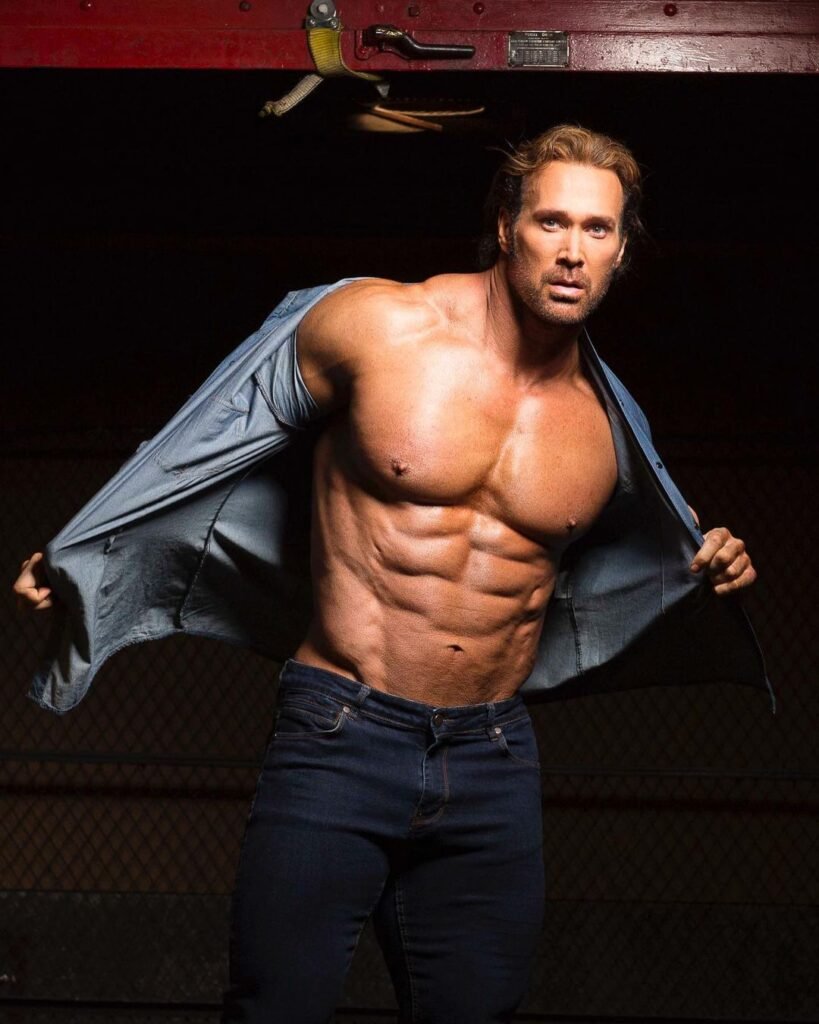Bodybuilding requires intense commitment, discipline, and work ethic to sculpt an award-winning physique. However, some take their dedication to the extreme, developing unhealthy obsessions that control their lives.
Where does the line get drawn between passion and addiction?

On a recent episode of The Mike O’Hearn Show, the legendary bodybuilder sat down with addiction recovery expert Adam Jablin to discuss the relationship between fitness, bodybuilding, and addiction.
The candid conversation highlighted the realities of exercise addiction and its damaging effects.
Social Media Fuels Extreme Leanness Culture
Mike O’Hearn pointed out that the rise of social media influences many young bodybuilders to stay highly lean year-round for photos and videos.
Maintaining stage-ready conditioning with single-digit body fat 52 weeks a year requires restrictive dieting and intense cardio.
According to Mike O’Hearn, this excessive leanness culture propagated online pressures younger generations to adopt unsustainable practices from a young age, risking health consequences.
It contrasts with the traditional bodybuilding mentality of defining “bulking” and “cutting” periods.
Mike O’Hearn believes the easy access to documented fitness journeys online causes more new lifters to forgo off-seasons and push dangerous extremes chasing the idealized physiques they see. Having proper role models to demonstrate balance is crucial.

The 3 Stages of Developing Addiction
Adam Jablin outlined the three stages that can lead to full exercise addiction:
Starting a Bad Habit
Most bad habits form rapidly, often within days. People pick them up knowing they aren’t beneficial but do them anyway. Initially, it feels like something that can be dropped quickly.
Unhealthy Dependency
A bad habit becomes a dependency when it becomes a repeated ritual controlling your schedule and focus. Life starts revolving around completing the habit daily, regardless of the consequences.
Addiction
True addiction centers on obsession, extreme cravings, and willingness to cause self-harm or hurt loved ones to engage in addictive behavior.
It overtakes mental health and makes quitting excruciatingly difficult. Jablin stressed that self-awareness and acknowledging one’s situation is the first step toward recovery.
Being honest about which stage you are currently at allows you to get help before addiction escalates.
Warning Signs of Exercise Addiction
Here are some warning signs that your dedication to fitness and bodybuilding may be morphing into a dangerous addiction:
- Prioritizing training over everything else in life
- Never taking days off from the gym and training while sick or injured
- Experiencing depression, anxiety, and irritability on rest days
- Avoiding social engagements to stick to your routine
- Continuing to diet and train with extreme methods that are damaging to health
- Hiding excessive exercise and restrictive eating patterns from others
- Feeling guilt or shame when missing a training session
- Self-worth and happiness tied to physical appearance and hitting fitness targets
- If you recognize any of these patterns, it may be time to step back and evaluate whether your relationship with fitness has become unhealthy.
- Never be afraid to seek help from a professional.
Dangers of Chronic Overtraining
While most associate addiction with substance abuse, behavioral addictions like exercise addiction can be equally destructive when taken to extremes.
Chronically overtraining without proper rest and recovery has severe consequences both physically and mentally:
- Increased risk of injury, overuse, and burnout
- Suppressed testosterone and hormone production
- Impaired protein synthesis and muscle growth
- Loss of strength and athletic performance
- Compromised immune system and frequent illness
- Increased cardiovascular strain
- Depression, anxiety, and distorted body image
- Listen to your body – it will provide warning signs if you push too far past your limits. Be vigilant to avoid spiraling into addiction.
Finding Balance and Moderation
So how can dedicated lifters continue pursuing ambitious bodybuilding goals while avoiding harmful addiction?
Here are some tips:
Objectively examine your motivations and relationship with exercise. Notice any obsessive thoughts or behaviors. Listen to your body’s signals. Take rest days when needed. Don’t train through pain repeatedly.
Build other interests and priorities outside the gym. Maintain perspective. Follow a structured plan with built-in recovery time, like deloading weeks. Avoid excessive training volume.
Seek counseling or therapy if you are experiencing any mental health issues or disordered exercise patterns. Find a mentor who models balance and healthy habits to guide you. Avoid toxic social media influencers.
Make nutrition and wellness the priority – not extreme leanness, shredded abs, or chasing unattainable ideals. With motivation and proper balance, it’s possible to achieve greatness in bodybuilding while avoiding the pitfalls of exercise addiction.
Set measurable process goals, embrace rest and recovery, and keep your health the number one priority. Consistency and moderation are keys.